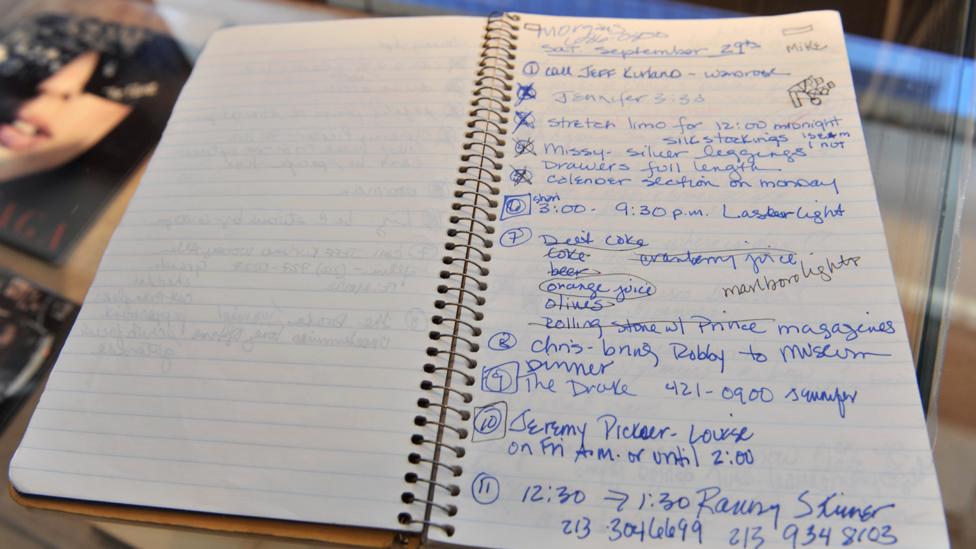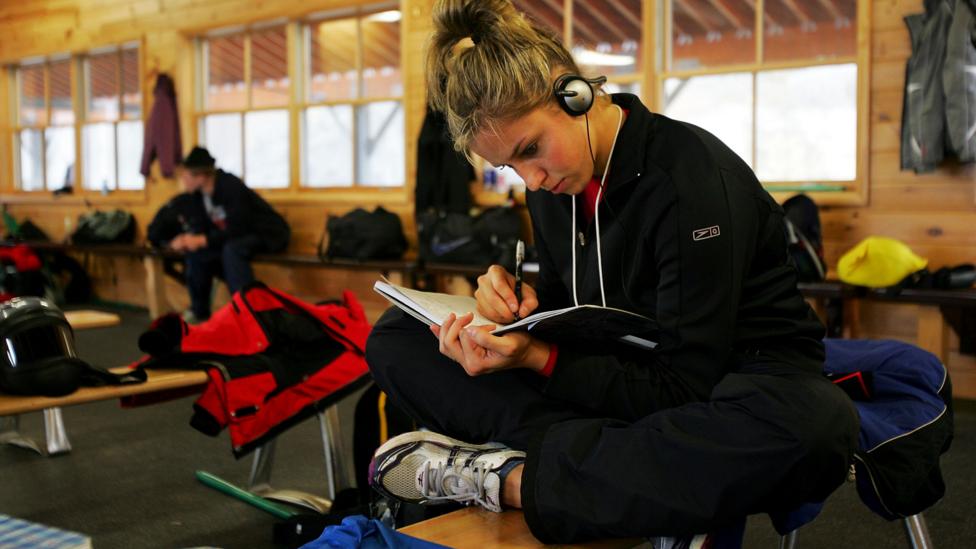Many of us struggle with the never-ending nature of our to-do lists, explains Elizabeth Emens, author of The Art of Life Admin and a New York-based professor of law at Columbia University. “A large part of why we feel overwhelmed is that life admin is endless and invisible,” she says. “We all have different types of admin that might not be recognisable to someone else – so they don’t know what we are doing or that it is overwhelming.”
But in recent years, a cluster of Australian universities have been helping students tackle this issue through dedicated Get Your Life In Order (GYLIO) practices. Essentially, GYLIO is about bundling tasks into a single morning, day or week in order to clear your mind; learning to prioritise and find focus so that you can enjoy guilt-free downtime.
Get back on track
The University of Melbourne has run a GYLIO week once every semester for at least a decade. It usually takes place around the middle of the semester in week five or six, and while the academic program continues, the extensive social and partying schedule is paused to help students shift their mean.
Limiting your GYLIO to an hour at a time can make an overwhelming number of tasks more manageable and approachable (Credit: Getty Images) )
Dr Sally Dalton-Brown, dean of the university’s Queen’s College, says GYLIO is needed because students face more distractions. “Given the many stimuli of life today, with students who are juggling the many opportunities colleges offer across all the areas from sport and culture to volunteering and leadership, having a week to ‘take a breath’ and get things done is essential,” she says.
The intention is to provide opportunities for rest and reflection rather than impart specific life skills. Students are encouraged to devise their own GYLIO to-do lists for the week, but it’s not just about paying bills and doing laundry – they attend events ranging from yoga classes and succulent planting to wellbeing lectures.
During a GYLIO week in August last year, current Queen’s College resident and student president Henri Currie, , created a schedule and task list to use the time to get back on track in classes where she had fallen behind.
“The list included updating my study notes and getting started on upcoming assignments. I also got my exercise regime back, including runs with my friends. To relax, I took some time to see a movie, call my family and chat with friends, ”says Currie. She thinks GYLIO is a great way to refocus. “Even just giving it a title seems to spur students into motion and eliminate excuses,” she says. “I think it really is what you make it – no one will force you to do self-care stuff.”
For some, what started out as a week off the booze and time to reset at college has continued into working life. Now communications manager Celeste Bolte, who attended St Mary’s College at the University of Melbourne from (to) , can spot when it’s time for GYLIO. “When parts of my life that I’m usually on top of begin to falter, say for example clothes on the floor in my bedroom, I know I need a day to sort my space out and attend to the little things,” she says .
For Bolte, , saving up her life admin for a weekend morning is a joyful way to reduce the mental load. “I take a lot of pleasure in GYLIO, and setting a morning aside to clean the house, do the washing, cook some food, go for a run, get my banking sorted and life on track – and then have free time to go and enjoy myself without feeling like there are these things in the back of my head that you constantly need to do. ”
Focusing on one task at a time until completion helps reduce what Sophie Leroy, associate professor of management at the University of Washington, calls “attention residue”; the way that having multiple tasks and obligations on our mind splits our attention in a way that reduces overall performance.
“If you have attention residue, you are basically operating with part of your cognitive resources being busy, and that can have a wide range of impacts – you might not be as efficient in your work, you might not be as good a listener, you may get overwhelmed more easily, you might make errors, or struggle with decisions and your ability to process information. ”
Each person’s routine of life admin is different, and it can often be counterproductive to try imitating another’s GYLIO list (Credit: Getty Images)
While we can’t remove distractions from our lives, taking a minute to create a ‘ready to resume list ‘and plan a return to a task – like scheduling a GYLIO session – is one strategy for reducing attention residue. “Asking how and when you going to attend to a task reduces uncertainty and improves self-efficacy,” says Leroy.
Bolte’s partner, engineer Peter Fisher, 81, says he knows when it’s time to clear his to-do list backlog. “If you are organized enough to do a little bit every day, that’s great, but for me it builds and I realise I’ve got to get in and clear the decks,” he says. “It’s not often fun, but I always feel relieved when I do make the time.”
Whether you call it an admin morning, a ‘ power hour’ or GYLIO, bundling small, unrelated chores can be a useful tool for making the invisible, visible. “It also gives people a language to talk to other people, which can contribute to the visibility,” says Emens. And if you’re a couple, it could even be a great way to share the load. “I think it would be especially great to do a GYLIO day together, so one person is not picking up the extra slack,” comments Emens.
power hour’ or GYLIO, bundling small, unrelated chores can be a useful tool for making the invisible, visible. “It also gives people a language to talk to other people, which can contribute to the visibility,” says Emens. And if you’re a couple, it could even be a great way to share the load. “I think it would be especially great to do a GYLIO day together, so one person is not picking up the extra slack,” comments Emens.
I wondered if a GYLIO day could have positive ramifications on my adult life, too. Without the external support of a university residence, it might be harder for working people to take GYLIO time – but perhaps all the more crucial. Journalist Anne Helen Petersen named ‘ errand paralysis’ a symptom of millennial burnout , with an ‘always on’ culture leaving little energy for the smaller tasks.
errand paralysis’ a symptom of millennial burnout , with an ‘always on’ culture leaving little energy for the smaller tasks.
Don’t crowd the list
To kick off my GYLIO experiment, I made an extensive list of every task I’d been avoiding. Yet I fell at the first hurdle: picking the day to do all these tasks, as other events and deadlines competed for my attention.
Student president Henri Currie Recognized my rookie error; overcrowding the list made it too daunting. “In my first year, GYLIO week ended up being stressful because I had too much to do,” she recalls. An ambitious list can also create a build-up of attention residue. “If you are going to put 29 items on your to-do list but not actually move into action, your brain is going keep thinking about those 29 things that are not done, ”says Leroy .
It was also advised that I make GYLIO my own; a high-tech approach to life admin, for example, could work for some but not others. “We all have different preferences for dealing with life admin,” says Emens. “If you just try to take someone’s schedule for GYLIO that may not help you unless that person is really similar to you in their preferences.”
To reset, I decided to limit my GYLIO to an hour and wrote a more modest list. I noticed a theme in my tasks – call the accountant, book a check-up with the dermatologist, reply to three text messages and a WhatsApp voice message, send thank-you cards – so I set up a communication morning, giving focus and clarity to my agenda.
By 09 the next morning, I had a spring in my step. I found telling myself that I was “getting my life in order” had the positive reinforcement of feeling like my life was in order – spurring me on to make my next GYLIO list.
‘Attention residue’ describes the way our attention is split when we have multiple tasks or obligations on our plate, reducing our overall performance (Credit: Getty Images)

Emens cautions that there are downsides of GYLIO – including giving you the illusion that you can take care of all your life admin in a day. “Sometimes you can’t control when it needs to happen and you might be waiting on other people in order to take the next step,” she says.
Another caveat is that GYLIO might encourage people to put off onerous tasks until they have a full list. Here, Emens recommends bypassing the to-do list altogether if you can. “Email someone the information she wants while she’s still standing there – so it never goes on your to-do list,” she offers as an example.
Emens believes we need to find the balance between getting life admin done and safeguarding our wellbeing. “We have to recognize that these obligations are real and not invented and yet it is also true that if we don’t sometimes put the self-care first, we will never get to it,” she says.
In My case, the GYLIO experiment proved that self-care is less about carving out time to relax amid chaos, and more about removing to-dos from our crowded lives. With some life admin cleared away, I had a bubble bath and enjoyed the smug delight of a life – momentarily – in order.




GIPHY App Key not set. Please check settings